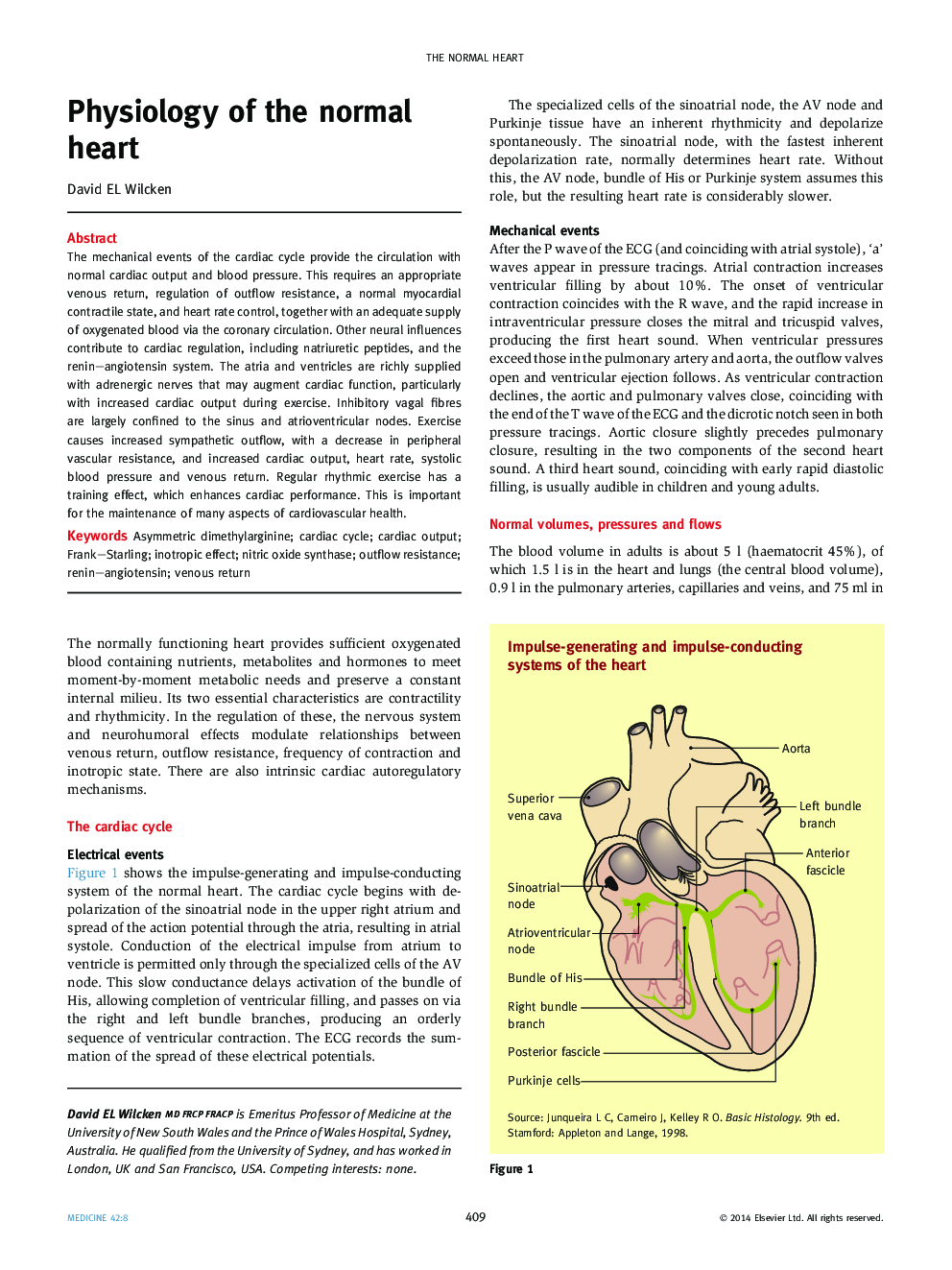| Article ID | Journal | Published Year | Pages | File Type |
|---|---|---|---|---|
| 3804696 | Medicine | 2014 | 4 Pages |
The mechanical events of the cardiac cycle provide the circulation with normal cardiac output and blood pressure. This requires an appropriate venous return, regulation of outflow resistance, a normal myocardial contractile state, and heart rate control, together with an adequate supply of oxygenated blood via the coronary circulation. Other neural influences contribute to cardiac regulation, including natriuretic peptides, and the renin–angiotensin system. The atria and ventricles are richly supplied with adrenergic nerves that may augment cardiac function, particularly with increased cardiac output during exercise. Inhibitory vagal fibres are largely confined to the sinus and atrioventricular nodes. Exercise causes increased sympathetic outflow, with a decrease in peripheral vascular resistance, and increased cardiac output, heart rate, systolic blood pressure and venous return. Regular rhythmic exercise has a training effect, which enhances cardiac performance. This is important for the maintenance of many aspects of cardiovascular health.
